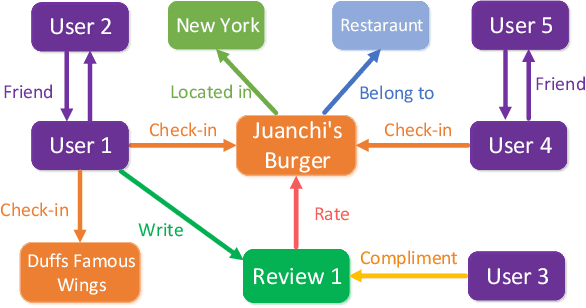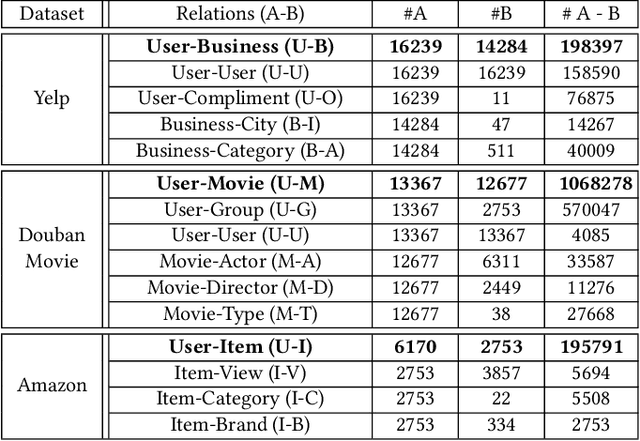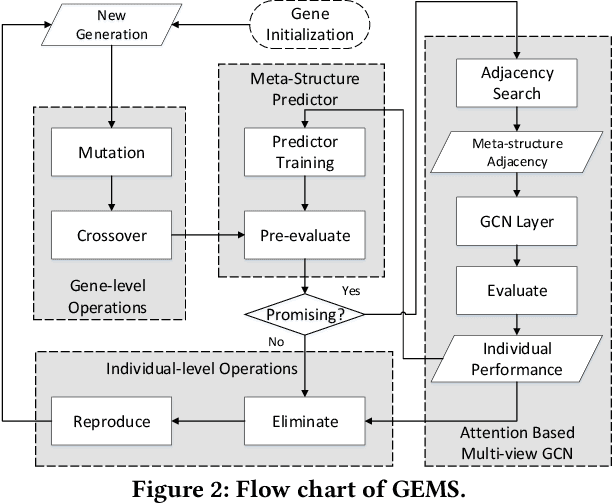Haorui Ma
Genetic Meta-Structure Search for Recommendation on Heterogeneous Information Network
Feb 21, 2021



Abstract:In the past decade, the heterogeneous information network (HIN) has become an important methodology for modern recommender systems. To fully leverage its power, manually designed network templates, i.e., meta-structures, are introduced to filter out semantic-aware information. The hand-crafted meta-structure rely on intense expert knowledge, which is both laborious and data-dependent. On the other hand, the number of meta-structures grows exponentially with its size and the number of node types, which prohibits brute-force search. To address these challenges, we propose Genetic Meta-Structure Search (GEMS) to automatically optimize meta-structure designs for recommendation on HINs. Specifically, GEMS adopts a parallel genetic algorithm to search meaningful meta-structures for recommendation, and designs dedicated rules and a meta-structure predictor to efficiently explore the search space. Finally, we propose an attention based multi-view graph convolutional network module to dynamically fuse information from different meta-structures. Extensive experiments on three real-world datasets suggest the effectiveness of GEMS, which consistently outperforms all baseline methods in HIN recommendation. Compared with simplified GEMS which utilizes hand-crafted meta-paths, GEMS achieves over $6\%$ performance gain on most evaluation metrics. More importantly, we conduct an in-depth analysis on the identified meta-structures, which sheds light on the HIN based recommender system design.
IFoodCloud: A Platform for Real-time Sentiment Analysis of Public Opinion about Food Safety in China
Feb 17, 2021



Abstract:The Internet contains a wealth of public opinion on food safety, including views on food adulteration, food-borne diseases, agricultural pollution, irregular food distribution, and food production issues. In order to systematically collect and analyse public opinion on food safety, we developed IFoodCloud, a platform for the real-time sentiment analysis of public opinion on food safety in China. It collects data from more than 3,100 public sources that can be used to explore public opinion trends, public sentiment, and regional attention differences of food safety incidents. At the same time, we constructed a sentiment classification model using multiple lexicon-based and deep learning-based algorithms integrated with IFoodCloud that provide an unprecedented rapid means of understanding the public sentiment toward specific food safety incidents. Our best model's F1-score achieved 0.9737. Further, three real-world cases are presented to demonstrate the application and robustness. IFoodCloud could be considered a valuable tool for promote scientisation of food safety supervision and risk communication.
 Add to Chrome
Add to Chrome Add to Firefox
Add to Firefox Add to Edge
Add to Edge